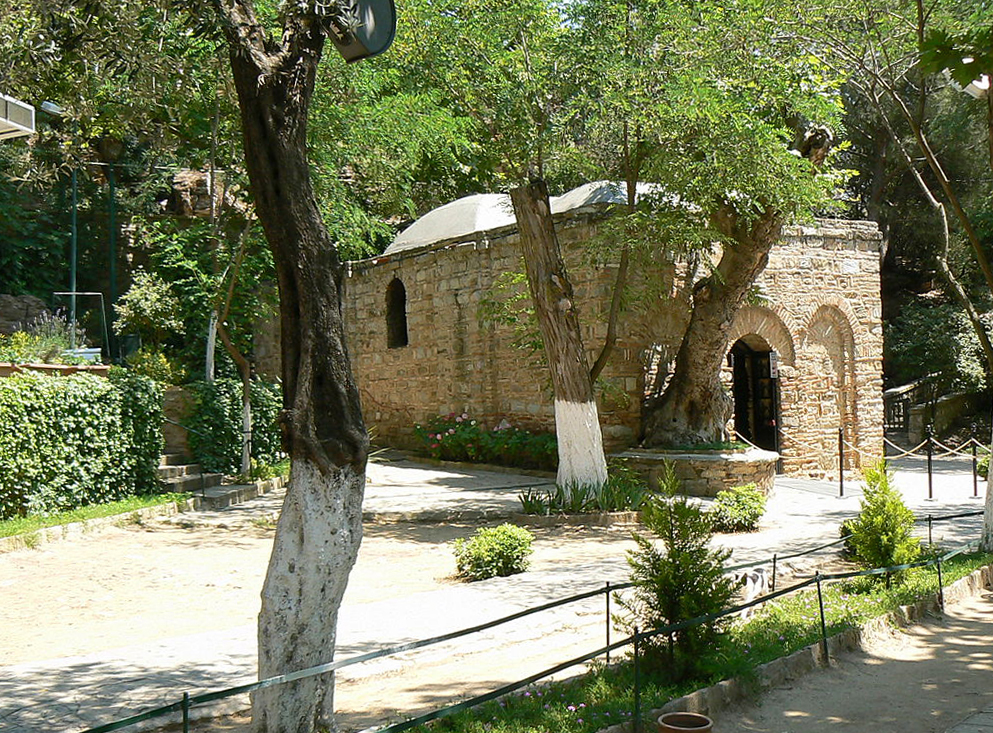The House of the Virgin Mary is a Catholic and Muslim shrine located on Mount Koressos , near the city of Ephesus ,seven kilometers from Selçuk, Turkey.
The chapel. Note the red line that separates the restored part from the original remains.
The building in question is really a small Byzantine church, probably dating, according to the plan and construction technique, to the 13th century. Although it was built on the remains of an older building, there is no archaeological evidence that it could date back to apostolic time.
The remains of the uncovered structure have been initially dated to the 6th and 7th centuries. More recent research points to the existence of a Roman villa during the first centuries of the common era, possibly as early as the first century BC. There are no building finds prior to the Byzantine era, the tombs found are from the 7th and 8th century. The current chapel, which was built on top of the remains found, is the result of restoration work completed in 1950. The restored part of the chapel is distinguished from the original remains of the structure by a line painted red.
An Assyrian Jacobite tradition tells that Mary was taken to this place by John the Evangelist after the crucifixion of Christ, fleeing persecution in Jerusalem. John had a small house built for her where Mary remained until her Assumption, or Dormition according to the Orthodox. The comparison of data from archeology and Syriac tradition makes it possible to establish that this sanctuary, in fact a 13th century Byzantine church, is legendary, which does not prevent it from becoming a place of pilgrimage.
Since its discovery at the end of the 19th century, the site has been a pilgrimage destination for both Christians and Muslims.
Access : Coordinates: 37.911528, 27.333972 / Address: Atatürk Mahallesi, Meryemana Mevkii, Küme Evler, 35920 Selçuk/İzmir, Turkey.
Highlights :
- Christian pilgrims visit the house based on the belief that Mary was taken to this stone house by Saint John and there they lived until the Assumption of Mary (according to Catholic doctrine) or until the Dormition (according to Orthodox doctrine).
- The sanctuary has received apostolic blessings and visits from several popes, the first time from Pope Leo XIII in 1896 and the most recent (2012) in 2006 by Pope Benedict XVI. Anne Catherine was beatified by Pope John Paul II on October 3, 2004.
- On October 18, 1881, based on descriptions in Brentano’s book of the visions of Emmerich, a French priest, Abbot Julien Gouyet discovered a small stone building on a mountain overlooking the Aegean Sea and the ruins of the ancient Ephesus in Turkey. He believed that it was the house described by Emmerich and where Maria would have lived her last days.
- Meryemana, the wishing wall : Pilgrims attach thousands of slips of paper with their prayer requests to the wall of the source enclosure below the house.
Go next : Ephesus , an ancient metropolis in the Aegean region of Turkey. Today it is one of the largest world heritage-listed archaeological sites.

